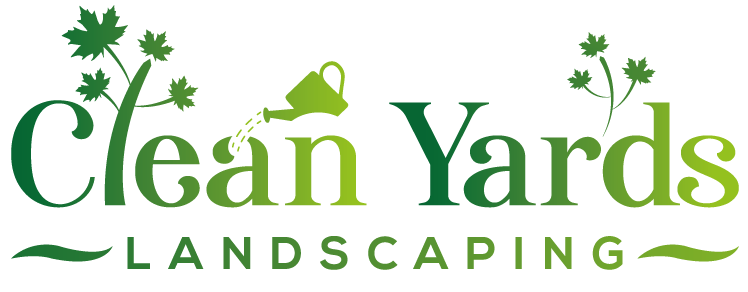Prevent Fall Strain: Best Metcalfe Garden Tools for Clay
Quick Takeaways:
- Heavy Ottawa clay, common in Metcalfe, makes fall gardening strenuous.
- Using the right tools (sharp spades, digging forks, broadforks) significantly reduces physical strain.
- Amending clay with organic matter in fall is crucial for long-term soil improvement.
- Proper tool maintenance (cleaning, sharpening) makes digging easier and safer.
- Combine smart tools with good technique (timing, leverage, breaks) for pain-free gardening.
Ready to tackle your fall gardening without the aches? If digging in Metcalfe's clay feels overwhelming, request a quote today for professional help!
Introduction: Digging Fall Without the Ache in Metcalfe
Ah, fall in Ottawa! The air gets crisp, the leaves put on a stunning show, and it's the perfect time for some essential gardening and landscaping tasks. Planting spring bulbs, dividing perennials, getting those new shrubs settled in before winter... it sounds lovely, right?
But let's be honest. If you live here, especially in areas like Metcalfe or nearby Greely, you know the real challenge: our soil. That heavy Ottawa clay can feel less like welcoming earth and more like stubborn cement! Wrestling with a shovel to prep garden beds or dig holes often leads to more groaning than gardening. That familiar post-digging backache or shoulder twinge? Yeah, we know it well.
What if this fall could be different? What if you could get all your planting done without feeling like you wrestled a grumpy badger? Good news! This article is your guide to smarter, not harder, fall gardening. We're diving into some fantastic tools designed to take the strain out of digging, making your autumn landscaping chores a whole lot easier on your body. Let's save the aches for admiring your beautiful work, not creating it!
Why Ottawa's Clay is a Workout (Especially in the Fall)
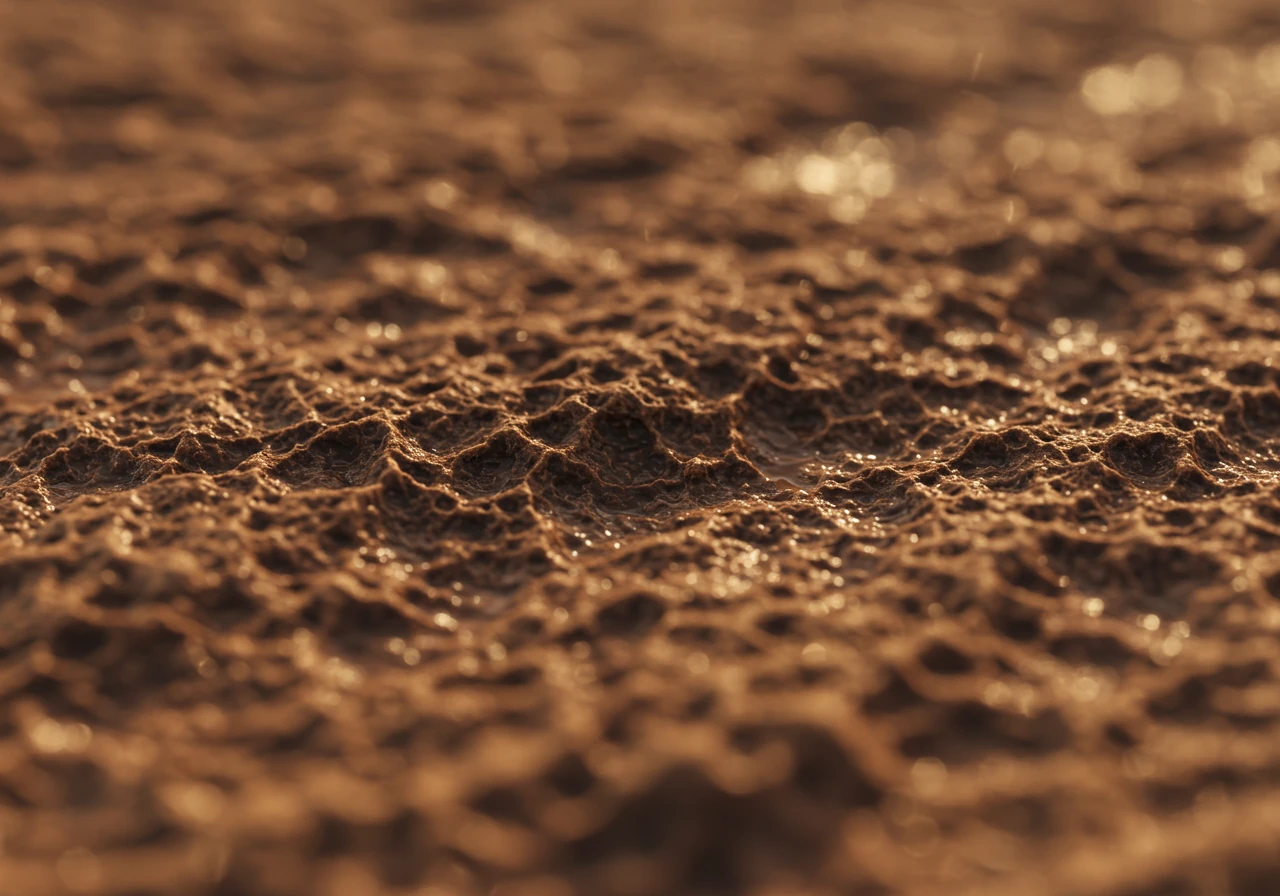
Okay, let's talk about the elephant in the garden – Ottawa's infamous clay soil. If you've ever tried digging here, especially in areas like Osgoode or Greely, you know it's less like gardening and more like wrestling sticky concrete. Why is it such a beast?
Well, much of our region sits on what's called Leda clay. Think of it like this: regular soil has different sized bits, leaving spaces for air and water. Clay soil, however, is made of super-tiny particles packed tightly together. When it's dry, it can bake hard like pottery. But in the fall, when the rain starts and the temperatures drop, things get... interesting.
Wet clay becomes incredibly heavy and sticky. Your shovel doesn't slice through; it gets sucked in. Every scoop feels like lifting a bucket of wet cement. Forget easy planting – creating new garden beds or even just digging holes for bulbs can feel like an extreme sport. The cold makes it worse, causing the already dense clay to contract and become even harder to penetrate. That satisfying thud when your shovel hits the ground? Often followed by a jarring stop and a jolt up your arms!
This isn't just annoying; it's physically demanding. Your back strains from leveraging the heavy, sticky clumps. Your shoulders ache from the repetitive, forceful motion. Even your hands and wrists feel the pressure. Honestly, just thinking about fall digging can make you tired! It underscores why proper preparation, including things like ensuring you Keep Greely Garden Tools Sharp & Clean to Prevent Disease, is so important – a dull spade makes the job ten times harder. Dealing with this heavy soil impacts landscaping tasks throughout the year, influencing everything from Vernon Summer Preventative Garden Care strategies to thinking ahead about potential issues highlighted during an Osgoode Summer Garden Health Check to Prevent Plant Loss. It even makes other fall chores, like ensuring proper drainage before tackling your Osgoode Sprinkler System Winterization Blow Out, more critical, as waterlogged clay takes ages to dry.
So yes, Ottawa clay is a workout, especially in the fall. If the thought of battling it again this year makes you want to curl up with a pumpkin spice latte instead, remember there are ways to make it easier (like the tools we'll discuss!) or options to get professional help with your tougher gardening tasks through various Landscaping and Yard Cleanup Services. You can find local Ottawa gardening resources via the Ottawa Horticultural Society.
Your Hand-Held Heroes: Essential Tools for Taming Clay
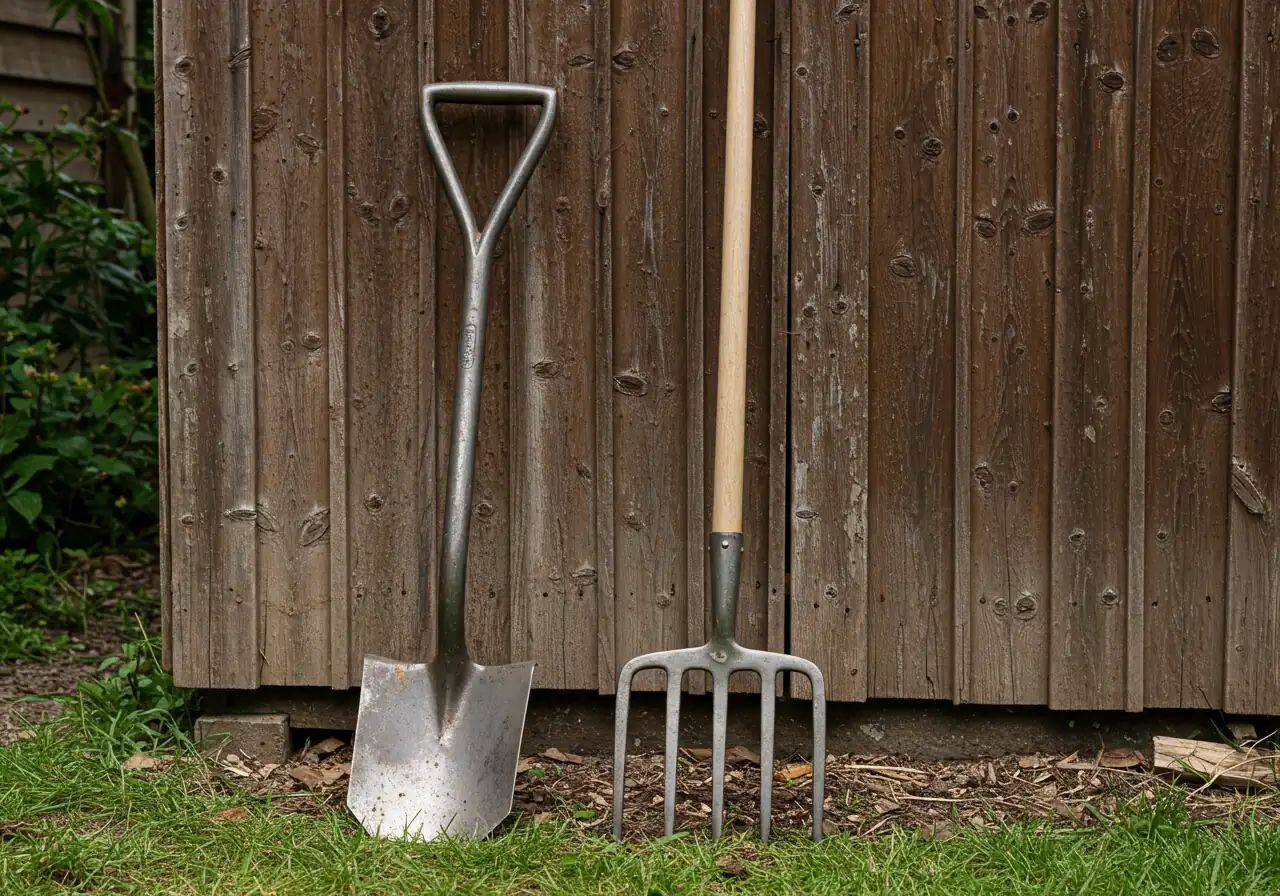
Alright, let's gear up! Facing down that heavy Ottawa clay doesn't have to feel like preparing for battle. Having the right hand tools makes a world of difference between a satisfying gardening session and a trip to the chiropractor. Think of these as your trusty sidekicks in the quest for beautiful garden beds and happy shrubs.
Here’s a rundown of the essentials for digging and planting in stubborn soil:
1. The Mighty Spade (Not Just Any Shovel!)
Forget those wide, scooped shovels meant for moving loose stuff like mulch or snow. For slicing into dense clay, you need a spade.
- Why it Works: Spades typically have flatter, sharper blades, often pointed or slightly rounded, designed to cut through compacted soil and roots. Look for blades made of forged steel – they’re tougher and hold an edge better. A rolled step or foot platform on top of the blade is a huge plus, saving your boot soles and letting you use your body weight effectively.
- Handle Helper: A sturdy handle is crucial. Hardwood is traditional, but fiberglass is strong, lighter, and won't rot. Consider a D-handle grip for better control and leverage, especially when twisting clumps of clay loose.
- Spade Smackdown (Simple Comparison):
- Digging Spade: Your go-to. Usually has a slightly pointed or rounded tip. Great for slicing edges, digging holes for planting, and turning soil.
- Border Spade: A smaller, lighter version. Ideal for working in tight spaces or established garden beds without disturbing existing perennials.
- Pointed Spade (Drain Spade): Long, narrow blade. Excellent for deeper, narrower holes (like for posts) or creating drainage channels – vital in clay!
Spade Type Comparison
| Spade Type | Blade Shape | Best Use in Clay | Pros | Cons |
|---|---|---|---|---|
| Digging Spade | Slightly Pointed/Rounded | General digging, planting holes, edging | Versatile, good leverage | Can be heavy |
| Border Spade | Smaller, Flat/Rounded | Working in tight spaces, established beds | Lighter, maneuverable | Less leverage for heavy breaking |
| Pointed/Drain Spade | Long, Narrow, Pointed | Deep holes, drainage trenches | Excellent for deep penetration | Less effective for wide scooping |
2. The Trusty Digging Fork
Sometimes called a garden fork or spading fork, this isn't your flimsy pitchfork for hay!
- Why it Works: Those strong, thick tines (usually four) are brilliant for breaking up large, compacted clods of clay after you've initially dug them out with a spade. It helps aerate the soil, making it much easier for roots, water, and nutrients to penetrate. It's also fantastic for incorporating compost or amendments. Trying to improve drainage in areas like Greely? A digging fork is your friend. If the job seems overwhelming, remember the Greely Yard Cleanup Service can lend a hand.
- Look For: Square or slightly flattened tines are stronger than round ones for prying through clay. Again, forged steel is the way to go.
3. The Helpful Hoe
While not primarily for heavy digging, hoes are essential for maintaining your garden beds once they're established.
- Why it Works: After the hard work of digging is done, a sharp hoe makes quick work of slicing weeds just below the surface. A draw hoe (the classic angled blade you pull towards you) is good for chopping weeds and shaping soil. An oscillating or scuffle hoe has a blade that cuts on both the push and pull stroke, making surface weeding faster. Keeping weeds down is a key part of general upkeep, something the Metcalf Garden Clean Up Service team knows well.
- Clay Tip: Use hoes when the top layer of clay is slightly dry; hacking at wet, sticky clay with a hoe is mostly just frustrating.
4. The Clever Cultivator
Think of this as a mini-fork or tiller, usually with three or five curved tines.
- Why it Works: Perfect for loosening the soil surface in smaller areas, around delicate plants, or breaking down smaller clay clumps after using the spade and fork. Great for mixing in fertilizer or compost around individual shrubs or perennials.
- Hand-Held Power: Both long-handled and short-handled versions are useful. The short ones are great for close-up work in raised beds or containers.
Ergonomics: Saving Your Back (Especially on Bigger Jobs!)
Working heavy soil puts a strain on your body. Choosing tools with ergonomic features can significantly reduce fatigue and prevent injury, particularly if you have a larger property common in areas like Barrhaven or Nepean.
- Match the Handle: Longer handles offer more leverage but can be unwieldy. Choose a length appropriate for your height – you shouldn't be bending excessively.
- Grip Matters: D-handles provide excellent control for digging and lifting. Cushioned grips can reduce vibration and prevent blisters.
- Weight Wisely: While steel is strong, overly heavy tools add to the strain. Fiberglass handles offer a good balance of strength and lighter weight.
- Technique: Bend your knees, keep your back straight, use your leg muscles, and don't try to lift too much heavy clay at once! Take breaks.
Sometimes, even with the best hand tools, the scope of work, like a full fall cleanup across a large Metcalfe property, is just too much. That's when exploring professional Metcalf Property Cleanup Service options or broader Ottawa Yard Cleanup Service makes sense. Investing in quality tools is smart, but knowing when to call for backup from comprehensive Landscaping and Yard Cleanup Services is even smarter! Check our Google My Business page for reviews and location info.
Smart Power & Leverage: When Hand Tools Need Backup
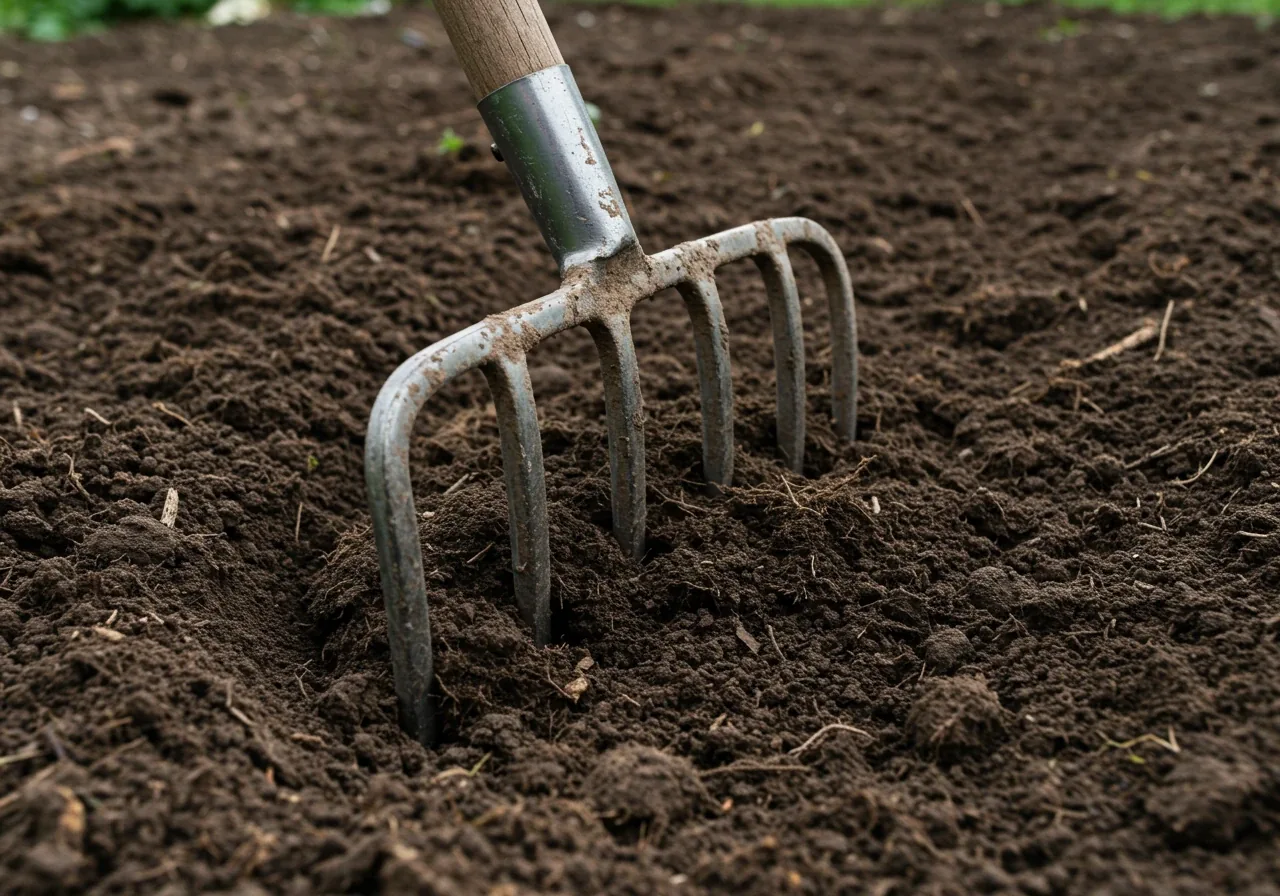
Okay, so you've got your trusty spade and digging fork, and they're great... most of the time. But let's face it, sometimes that Ottawa clay puts up a fight worthy of a heavyweight champ. Trying to break new ground for a large garden bed, prep for extensive planting, or simply deal with exceptionally stubborn, compacted soil can leave even the best hand tools (and your back!) feeling overwhelmed. When your muscles are screaming louder than your enthusiasm for gardening, it's time to call in the reinforcements – tools that offer serious leverage or mechanical muscle.
Think of these as the next level up in your landscaping arsenal:
1. The Broadfork: Your Leverage Buddy
Imagine a very wide, super-strong digging fork with two long handles. You stand on the crossbar, using your body weight to drive the tines deep into the soil, then rock back on the handles to loosen a large section.
- Why it Works: It’s fantastic for aerating compacted soil without completely pulverizing the soil structure like a tiller can. It breaks up hardpan, improves drainage (crucial in our clay!), and prepares beds for planting. It’s still a workout, mind you, but it uses leverage intelligently, making it more efficient than just a spade for loosening large areas.
- Pros: Great for soil health, deep aeration, no fuel needed, relatively quiet.
- Cons: Requires physical effort (though different muscles than digging), can be slow for huge areas, struggles with very rocky soil.
2. The Rear-Tine Tiller: The Groundbreaker
When you need to chew through sod, break entirely new ground, or incorporate large amounts of compost into a big garden bed, a rear-tine tiller is often the tool for the job. Unlike front-tine tillers (which can bounce around on clay), rear-tine models have powered wheels that help pull the machine forward, while the tines work the soil behind them.
- Why it Works: Its engine power does the heavy digging and churning, making short work of large plots. It's especially useful when preparing a large, uniform area, like getting ready for a new lawn via Sod Installation.
- Pros: Powerful, fast for large areas, excellent for breaking new ground.
- Cons: Heavy, noisy, requires fuel/maintenance, can destroy beneficial soil structure if overused (turning it into powder), potentially overkill for smaller tasks. Can be difficult to maneuver.
3. The Auger: The Hole Specialist
Need to plant dozens of shrubs, install fence posts, or get those bulbs in deep? A powered auger (either handheld or an attachment for other equipment) drills uniform holes quickly.
- Why it Works: It saves immense time and effort compared to digging many individual holes with a spade, especially for deeper planting.
- Pros: Fast hole digging, consistent hole size/depth.
- Cons: Can struggle in very rocky soil, potential to 'glaze' the sides of holes in pure clay (making it hard for roots to penetrate – rough up the sides with a hand tool!), specific use tool.
Hand Tools (Spade, Fork, Hoe, Cultivator)
Best for smaller jobs, working in existing beds, precision tasks, and regular maintenance. Require physical effort but offer control and preserve soil structure better. Essential for all gardeners dealing with clay.
Leverage Tools (Broadfork)
Excellent for deep aeration and loosening large areas without excessive soil disturbance. Uses body weight effectively but still requires manual effort. Great for improving compacted clay health.
Power Tools (Tiller, Auger)
Ideal for breaking new ground, very large areas, or repetitive tasks like digging many holes. Saves significant time and effort but can be heavy, noisy, require maintenance, and potentially damage soil structure if overused. Often available for rent.
Rent or Buy? The Big Question (Especially in Richmond & Kars!)
These power tools are investments. If you live on a larger property, perhaps out near Richmond or Kars, and find yourself constantly expanding garden beds or doing major landscaping projects, buying might make sense. Consider storage space and maintenance needs. However, for most homeowners tackling a specific, large project – like preparing the ground for a major new Garden Install or breaking ground just once – renting is often the smarter, more cost-effective choice. Many local rental shops carry these items. Useful advice on tool selection might be found via Master Gardeners of Ottawa-Carleton.
Remember, even with power tools, sometimes the scale of a fall cleanup or garden prep job is just too big. Professional teams not only have the equipment but also the expertise for efficient work, handling everything from the initial digging to the final touches like Mulching and Edging. If wrestling with clay, even with power tools, sounds less appealing than enjoying the autumn colours, don't hesitate to Contact Us to discuss how we can help, whether it's targeted assistance or a full Metcalf Garden Clean Up Service.
Your Fall Clay Strategy: Working Smarter, Not Harder
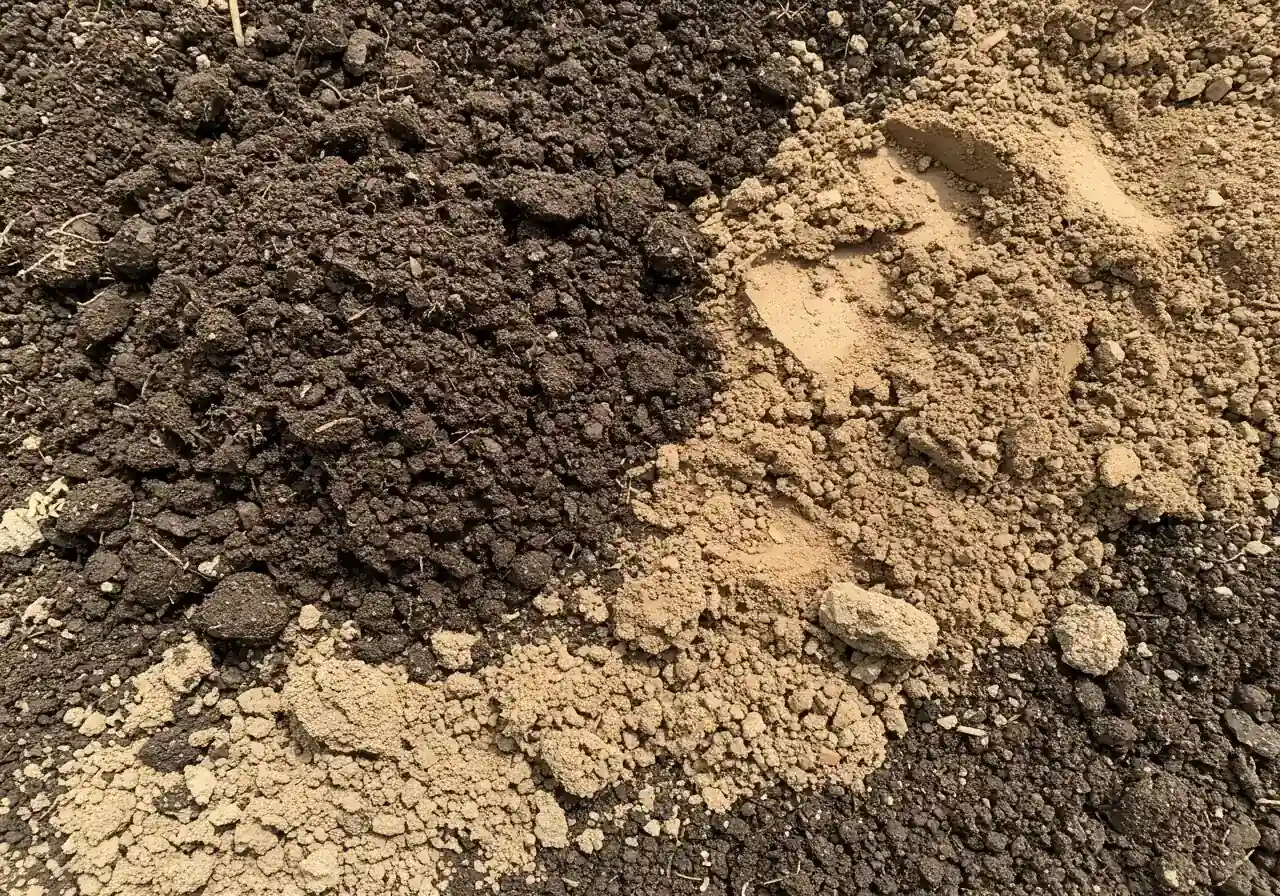
Alright, let's roll up our sleeves (but hopefully not break our backs!) and talk strategy for getting those Ottawa garden beds ready for winter and glorious next spring. Taming clay isn’t about brute force; it’s about timing, technique, and giving the soil what it needs. Think of it less like a wrestling match and more like a gentle negotiation with the earth. Here’s a smarter approach for fall gardening prep:
Fall Soil Prep Timeline
Step 1: Timing is Key
Work clay soil after early fall rains – aim for moist, not saturated or bone-dry. Usually mid-Sept to mid-Oct in Ottawa.
Step 2: Tidy Up Time
Clear spent annuals, weeds (get the roots!), and diseased debris. Consider a Marionville Yard Cleanup Service for large areas.
Step 3: Feed the Beast (Generously!)
Add 2-4 inches of organic matter (compost, shredded leaves, aged manure). Explore Material Selection options. Local compost resources can be found via the City of Ottawa Green Bin program.
Step 4: Gentle Integration
Use a spade and digging fork to work amendments into the top 6-8 inches. Avoid pulverizing. Focus on careful Soil Preparation.
Step 5: Tuck it in for Winter
Apply 2-3 inches of winter mulch (shredded leaves, straw) to protect soil and prevent heaving. Essential before a future Garden Install.
By following these steps, you’re not just digging; you’re investing in healthier soil for years to come. And remember, if the scope feels too large, professional services are available, just be sure to understand the specifics outlined in their Terms and Conditions. Happy (and smarter) fall gardening!
Keep Your Tools Happy (So Your Body Stays Happy Too!)
Okay, let's talk about giving your trusty garden warriors – your tools – a little TLC. Think of it this way: if your spade is dull and rusty, guess who has to make up the difference? You! Keeping your tools happy is one of the best ways to keep your body happy, especially when tackling that stubborn Ottawa clay. A little maintenance goes a long way in reducing strain during your gardening and landscaping chores.
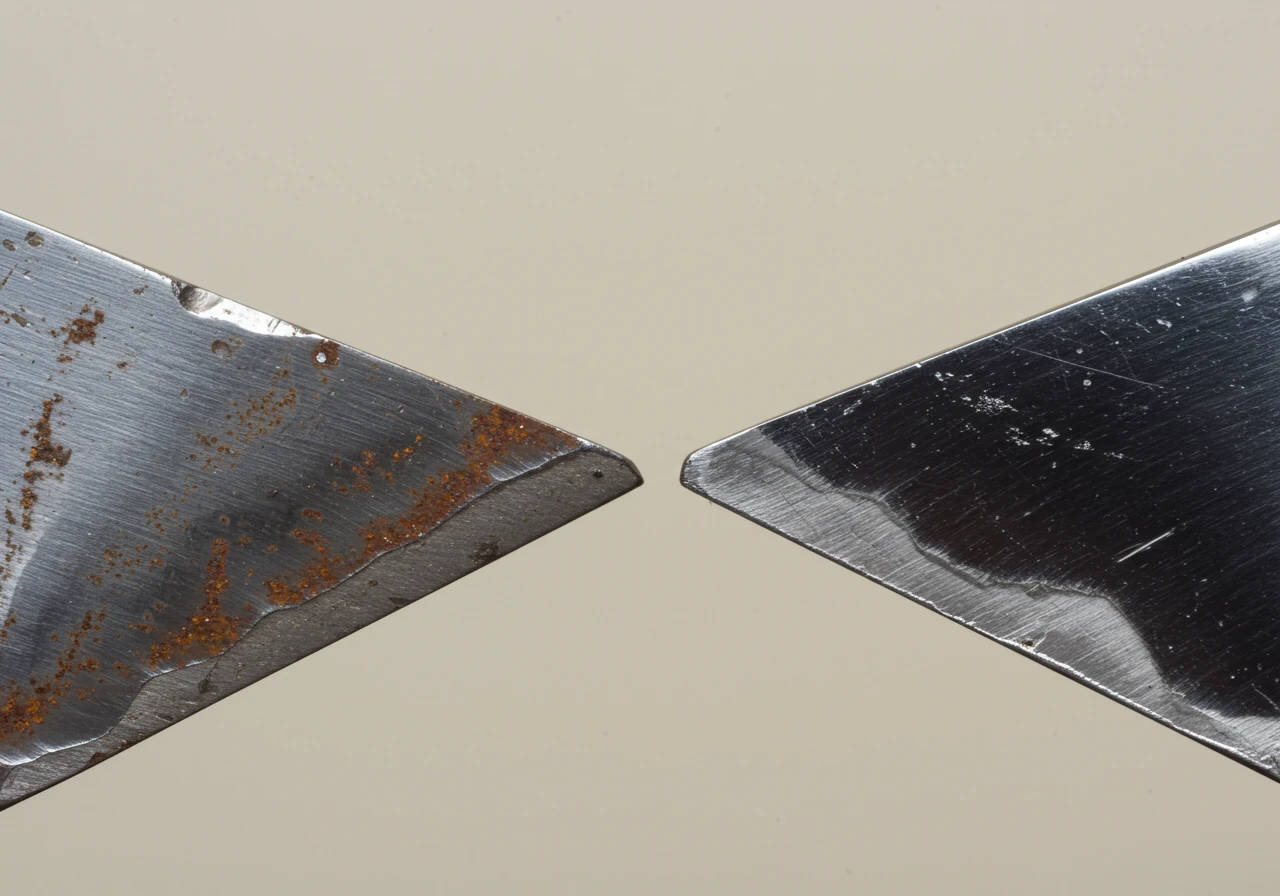
Here’s how to show your tools some love:
- Scrub-a-Dub-Dub After Digging: That sticky clay clings like nobody's business. Don't just lean your spade against the shed! Use a stiff brush, putty knife, or hose to get the worst of the mud off every time. Dried clay is harder to remove and holds moisture against the metal, inviting rust. Think of it as washing the battle scars off your champion!
- Keep 'Em Sharp – Seriously: This is HUGE for clay soil. A dull spade or hoe doesn't slice; it mashes. You end up using way more muscle pushing and chopping. A sharp edge cuts cleanly, requiring less force. Use a mill file (following the existing bevel angle) or a sharpening stone. Even a few minutes of sharpening before a big digging session makes a noticeable difference. It's the secret weapon against clay fatigue!
- Oil is Your Friend: After cleaning and drying, give metal parts a light coat of lubricating oil (like WD-40, boiled linseed oil, or specialized tool oil). This prevents rust, which is especially important in our humid summers and damp falls. Consider choosing the right cleaning supplies or protective oils as part of your regular supply run – you can often find good options at hardware stores out near Winchester or Embrun.
- Handle With Care: Wooden handles can dry out, crack, and splinter (ouch!). Periodically sand down any rough spots and apply boiled linseed oil to keep the wood conditioned and strong. Check that handles are securely attached to the tool head – a wobbly spade is inefficient and dangerous. Fiberglass handles just need a wipe-down.
- Tuck Them In Properly: Don't leave your tools out in the rain or lying on damp ground overnight. Store them in a dry shed or garage, preferably hanging up so air can circulate. This simple step drastically prolongs their life and prevents rust during storage, especially after a big job like a Marionville garden clean up service might require. Good tool care, like the kind practiced by professionals (perhaps like the team you can learn about us), ensures tools are always ready and efficient. For more cleanup options see our Metcalf yard cleanup service page.
Taking these few extra minutes after each gardening session makes the next Metcalf yard cleanup service or simple planting task much smoother and less strenuous. Think of it as a little thank you to your tools for helping you create your beautiful Ottawa garden!
Quick Tips for Pain-Free Clay Busting
Let's face it, that Ottawa clay can be a real back-breaker, especially around areas like Manotick where gardening dreams meet dense soil reality! Here are some quick tips to keep the groans to a minimum while you're digging this fall:
- Bend Those Knees, Captain! Seriously, lift with your legs, not your back. Keep your back straight when digging and lifting shovelfuls of clay. Your spine will thank you later. Learn more about our approach to lawn care and garden work.
- Work *With* the Weather: Avoid wrestling super wet, sticky clay (hello, mud monster!) or bone-dry, concrete-like clay. Aim for that 'just right' moist condition where tools can actually slice through without needing Herculean effort. Proper timing makes even tough garden maintenance tasks less strenuous down the line.
- Sharpen Up & Use Leverage: A sharp spade cuts easier, meaning less brute force from you. Use the footrest on your spade and let your body weight help push it into the ground. Make the tool do the heavy lifting! Efficient work is key; you can see how the Clean Yards team approaches challenging Ottawa clay efficiently.
- Take Breaks, Champ! Trying to tackle a huge garden bed in one go is a recipe for aches. Work in shorter bursts, stand up, stretch, and admire your progress. Rome wasn't built in a day, and neither is your perfect landscape. Regular upkeep can be managed through our customer portal.
- Little Chunks, Big Wins: Don't try to lift massive, heavy clumps of clay. Break them up first with a digging fork or take smaller scoops with your spade. It might feel slower, but it's much kinder to your muscles.
- Know When to Call for Backup: Some landscaping jobs are just plain big or overly strenuous. If turning over a large plot or dealing with severely compacted soil feels overwhelming, don't risk injury. Sometimes, calling in help for a professional property clean up to save your back is the smartest move. You can even see examples of challenging landscapes we've transformed in our gallery.
FAQs: Your Ottawa Clay Conundrums Answered
You bet! Amending clay soil in the fall is brilliant. Adding organic matter like compost or shredded leaves now gives it all winter to break down. The freeze-thaw cycles help integrate the goodies, making planting much easier come spring. Plus, the soil is usually nicely moist (not rock hard or soupy mud!) making digging less of a chore than mid-summer.
Compost, compost, compost! While shredded leaves or well-rotted manure are great too, good quality compost is king for improving clay structure and fertility. It adds organic matter, improves drainage, and feeds beneficial soil microbes. Think of it as giving your garden beds a super-vitamin boost to break up that dense texture common in areas like Kars.
Ah, the 'bathtub effect'! It sounds good, but planting directly into an amended hole in unamended clay can cause problems. Water collects in the nice soil, potentially drowning the roots because it can't drain into the surrounding dense clay. It's better to amend a wider area for better root spread and drainage. If you're unsure about the scope, check out options like our Ottawa Property Cleanup Service for larger soil preparation projects.
For most perennials and smaller shrubs, working amendments into the top 6-8 inches of soil is usually sufficient. More is always better, especially for larger shrubs or plants needing excellent drainage. Focus on incorporating organic matter thoroughly rather than just layering it. The goal is gradual improvement of your existing soil for long-term landscaping success. View our Ottawa garden clean up service details.
Absolutely! Raised garden beds are a fantastic solution in clay-heavy areas like Kenmore. You can fill them with a high-quality soil mix from the start, ensuring great drainage and easy planting. It eliminates the need for heavy digging into the native clay, though you'll still need to manage the soil within the beds over time. Some services, like the Marionville Property Cleanup Service, might even assist with garden setup or removal tasks.
We value your input! If you've received advice or an estimate from us regarding your clay soil challenges or any other landscaping need, we'd love to hear your thoughts. You can share your experience directly through our Estimate Feedback form. Rest assured, any personal information shared is handled according to our stringent Privacy Policy.
Conclusion: Put Down the Back Brace, Pick Up the Right Tools
So, let's put down that imaginary back brace! Battling Ottawa's infamous clay soil for your fall gardening doesn't have to end in aches and pains. As we've seen, having the right tools – a sharp spade, a sturdy digging fork, maybe even leveraging a broadfork for those bigger garden beds – makes a world of difference. They help you work smarter, not harder, turning heavy digging for new shrubs or perennials from a dreaded chore into a more manageable task. You'll save your muscles and get much better results.
- Go ahead, pick up the right tools this season and actually enjoy your autumn landscaping!
- If wrestling that clay, especially for larger projects in areas like Metcalfe or Osgoode, still feels daunting, remember the Clean Yards crew is ready to help with professional landscaping support.
- What are your favorite clay-busting tools or tricks? Share your thoughts in the comments below – we'd love to hear them!
